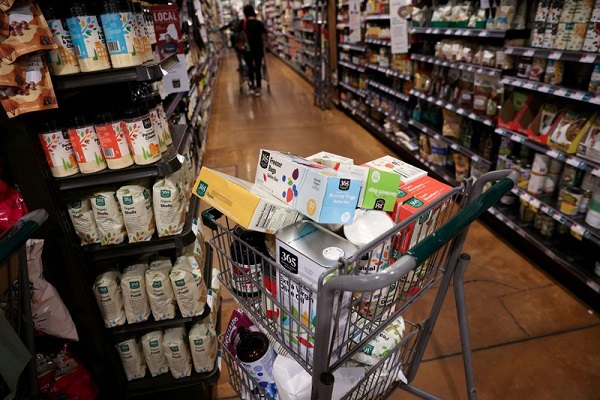By Peter Nurse
Investing.com -- The Federal Reserve has put the idea of a recession back on the agenda, and investors will study producer prices and jobless claims for further clues on the health of the U.S. economy. Elsewhere, shares of Chinese e-commerce giant Alibaba slumped on a report Softbank is set to dump the majority of its stake.
1. Recession on the agenda
Signs that U.S. inflation is cooling provided investors with a boost on Wednesday, but a lot of that goodwill evaporated after the minutes from the last Federal Reserve meeting showed that policymakers now expect a "mild recession" this year.
The Fed officials expressed concern about the health of the country’s regional banks, suggesting that the next moves could depend on credit conditions.
However, it’s important to remember that the Fed’s last meeting was held when the banking crisis largely triggered by the collapse of Silicon Valley Bank was in full flow, and conditions are less stressed now.
The big U.S. bank earnings reports, starting Friday, will be studied even more carefully than before, but ahead of this comes more inflation data in the form of producer prices, which are expected to moderate from the same time last year, and unemployment claims, which are expected to inch higher than the prior week.
2. Alibaba slumps on report of Softbank stake sale
Alibaba’s (HK:9988) (NYSE:BABA) shares fell sharply in Asia earlier Thursday after a report in the Financial Times indicated that SoftBank (TYO:9984) (OTC:SFTBY) plans to ditch almost its entire holding in the Chinese e-commerce giant.
The Japanese investment house has struggled with a severe downturn in its technology holdings over the past year, and has previously used its stake in Alibaba to generate cash. It has already generated just over $7 billion from Alibaba stock sales this year, after a record $29B selldown in 2022.
This new move would leave Softbank with a holding in Alibaba of less than 4%, having at one point controlled as much as 34%.
Alibaba’s announcement last month of plans to split the massive conglomerate into six units had been received well, boosting its share price after the prolonged weakness caused by around two years of intense regulatory scrutiny from the Chinese government.
3. Futures edge higher; Delta set to report earnings
U.S. futures traded marginally higher Thursday, as investors digested cooling consumer prices as well as the possibility of a recession later in the year.
At 05:00 ET (09:00 GMT), the Dow futures contract had gained 20 points or 0.1%, S&P 500 futures inched up 4 points or 0.1%, and Nasdaq 100 futures added 12 points or 0.1%.
Investors have more inflation data to study Thursday in the form of March producer prices as well as weekly jobless claims, but activity may well be limited ahead of the start of the quarterly earnings season on Friday, with the major banks taking the lead.
Elsewhere, Delta Air Lines (NYSE:DAL) is scheduled to report its quarterly numbers, and analysts will be listening to what the carrier says about labor and fuel costs and travel demand.
4. China’s exports post surprise rise
Chinese exports unexpectedly surged last month, offering optimism that the second-largest economy in the world can recover quickly from the strictures caused by the country’s severe zero-COVID policy.
Exports in March shot up 14.8% from a year ago, snapping five straight months of declines, with Chinese officials citing rising demand for electric vehicles for the surprise jump.
Investors will now be looking to see how sustainable this improvement will be given the economic slowdown expected in the major export markets of the U.S. and the European Union in the second half of the year.
5. Oil prices steady ahead of monthly OPEC report
Crude prices traded just below the flatline Thursday, with Fed talk about a possible recession [see above] taking the edge off the recent rally.
By 05:00 ET, U.S. crude futures were down 0.1% at $83.19 a barrel, while the Brent contract edged down by 0.2% to $87.22 per barrel.
The proximity to the release of the monthly report from the Organization of Petroleum Exporting Countries has also prompted caution.
This is due later in the session and is expected to provide more cues on crude demand and supply after the cartel unexpectedly cut production earlier this month.
Both benchmarks rose 2% on Wednesday to their highest in more than a month as cooling U.S. inflation data spurred hopes the Federal Reserve is likely to stop hiking interest rates.
Traders largely overlooked an unexpected rise in U.S. crude inventories, as the bulk of this increase was driven by a release from the Strategic Petroleum Reserve.
